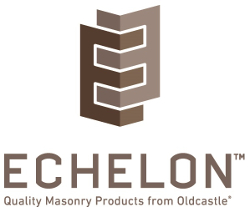Masonry Wall Systems Well Positioned to Meet Evolving Codes
Insulated Concrete Masonry Systems (ICMS)
A complete insulated concrete masonry system (ICMS) consists of a pre-assembled structural masonry unit, an insulation insert, and a thin veneer face. Furthermore, the system consists of all necessary components to address every aspect of the building, including the inside and outside corners, the window and door openings, and services, maintaining a fully thermally broken envelope. The most advanced assembly includes a high-performance expanded polystyrene (EPS) molded insulation insert, giving the assembled unit a total effective R-value of 16.2 at 75 degrees Fahrenheit.
The Engineered EPS inserts are designed with a vertical shiplap, and the system also includes a closed-cell foam gasket installed on the horizontal joint. These features ensure no air leakages, while maintaining a continuous insulation.
At their best, ICMS meet IECC Energy code requirements from zones 1 through 7. Without any other layer, just a coat of paint on the inside, some of these systems can cover up to zone 6. With the addition of lath and gypsum layer in the inside the wall, many systems can address all climate zones.

Image courtesy of Oldcastle Architectural
Insulated concrete masonry systems are a single solution for energy efficiency and water management.
Those systems with stainless steel metal anchors molded into the EPS inserts enjoy superior structural stability and ensure a safety connection to the back wall during windloading and for fire safety. With the veneer and anchors, the wall system can withstand up to 200 miles per hour of wind speed.
Because it does not readily corrode, rust, or stain with water as does ordinary steel, stainless steel anchors can be effective in salt water or coastal environments. Some systems include two additional drainage planes at each side of the continuous insulation for more effective moisture management which is particularly useful as the building ages and water infiltrates cracks in the mortar. These drainage planes eliminate the likelihood of mold and mildew.
A typical finished size is 12 inches by 8 inches by 16 inches. These insulated systems are also fairly adaptable in size, shape, and density, which eliminates the need to glue together multiple boards to achieve the desired insulation thickness—a characteristic that enables designers to achieve R-value targets in a thickness-constrained application. In the face of increasing R-value targets, these insulated systems are considered perhaps the best opportunity to easily adapt as a slight increase in insulation thickness can provide the necessary thermal performance.
Masonry Wall Systems Make Sense for Evolving Energy Targets
Energy-efficiency targets have been steadily becoming more rigorous, and the future promises more of the same. Masonry wall systems take advantage of the inherent value of masonry—thermal mass, durability, low life-cycle cost—in an all-in-one cladding solution to meet and exceed code. With the ability to be tested and verified as a single component, wall systems have gained favor over alternate methods with disparate components that may or may not work together to achieve the parameters of wall performance—energy efficiency, moisture management, air tightness, sound insulation, and fire protection.
End Notes
- “Transforming the Market: Energy Efficiency in Buildings.” The World Business Council for Sustainable Development (WBCSD). Web. 7 October 2016. www.wbcsd.org/transformingthemarketeeb.aspx.
- Benefits of Green Building.” U.S. Green Building Council (USGBC). 1 April 2016. Web. 7 October 2016. www.usgbc.org/articles/green-building-facts.
- Mukhopadhyay, Jaya et al. “Comparing The Commercial Provisions of the 2015 IECC with the Corresponding Provisions in the 2012 IECC for Commercial Construction in Texas.” November 2014. Web. 7 October 2016. esl.tamu.edu/docs/terp/2014/ESL-TR-14-11-04.pdf.
- 2015 IECC Commercial Scope and Envelope Requirements.” Building Energy Codes Program, U.S. Department of Energy. Web. 7 October 2016. www.energycodes.gov/sites/default/files/becu/2015_IECC_commercial_requirements_envelope.pdf.
- Straube, John. “BSD-163: Controlling Cold-Weather Condensation Using Insulation.’’ Building Science Digests. Building Science Corporation. 15 November 2011. Web. 7 October 2016. buildingscience.com/documents/digests/bsd-controlling-cold-weather-condensation-using-insulation.

|
Echelon is the consolidated brand for all masonry products and services of Oldcastle Architectural including Trenwyth® Architectural Masonry, Artisan Masonry Stone Veneers®, Quik-Brik® Concrete Masonry Units, Amerimix® Bagged Goods and a complete portfolio of Performance Upgrades. As a single source masonry portfolio solution, Echelon delivers consistent, reliable product manufactured locally at more than 170 locations and delivered by an unrivaled logistics network. For more information, call (844) 495-8211 or visit EchelonMasonry.com |








